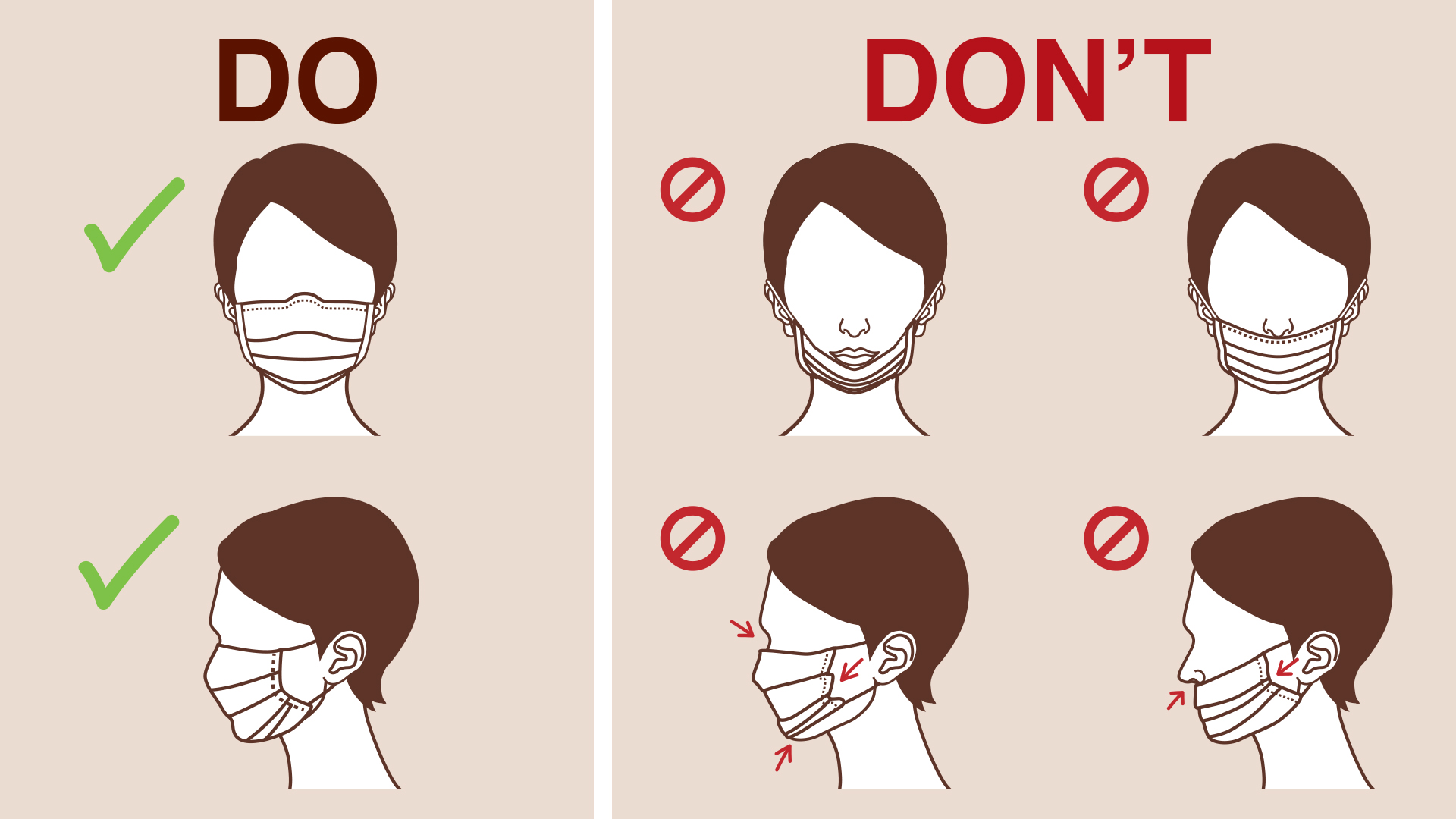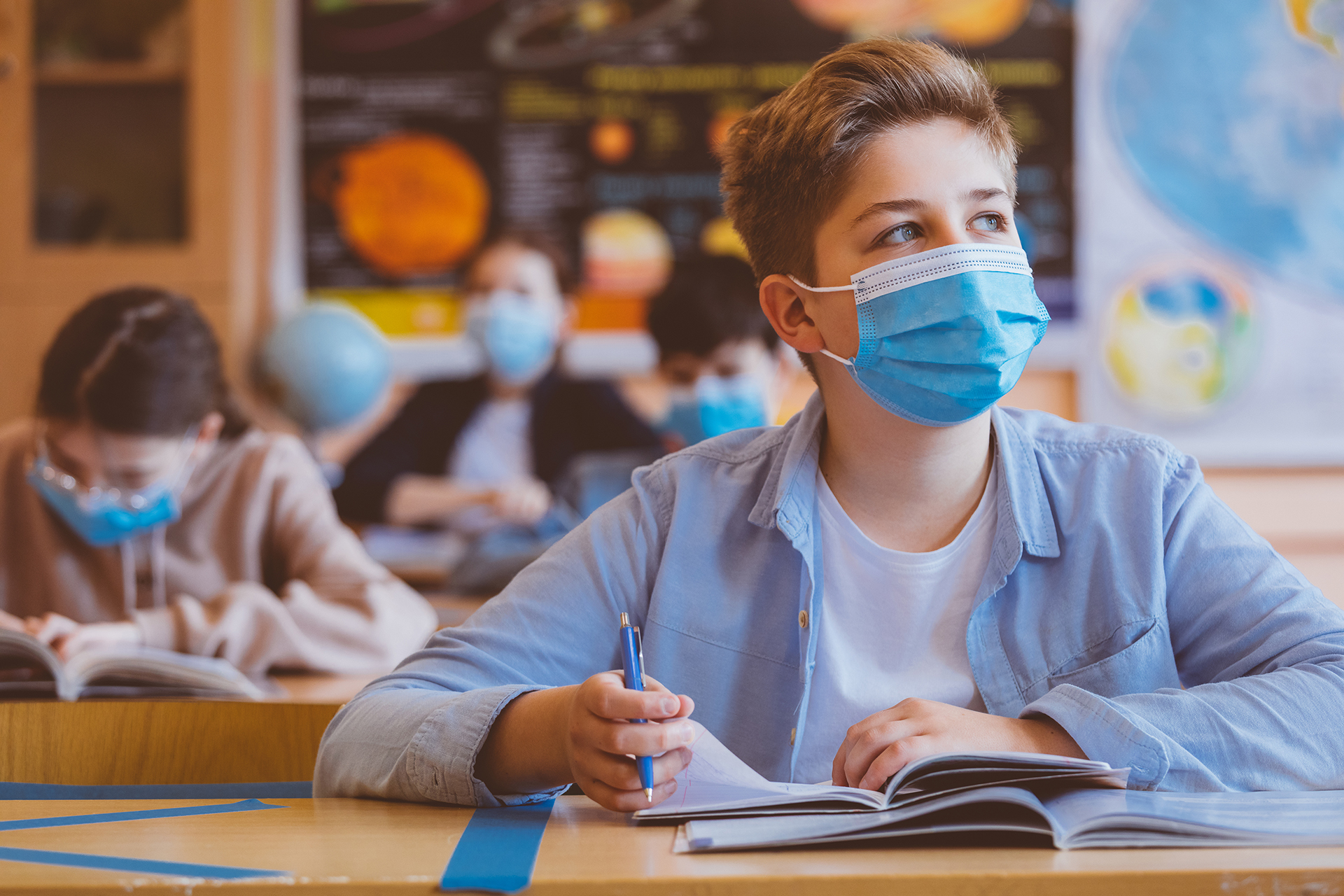Why you should teach your kids to wear a face covering
School protocols require children 11 years and older to wear a face covering while in class
Middle and high school students who attend in-person classes this school year will be asked to add a new back-to-school item to their wardrobe — a mask or face covering.
Memorial Regional Health is here to offer our assistance for parents and families as we all navigate the new guidelines for children returning to school.
What are the Moffat County face covering requirements for students?
In order to protect the health of students, staff and their respective families at home from COVID-19, face covering protocols will be enforced in grades 6-12 at Moffat County School District schools. These protocols must be followed by all students, staff and visitors per local and state mandates.
Colorado’s mandatory statewide mask order requires individuals who are 11 years of age and older to wear a covering over their noses and mouths while entering or moving within any public indoor space, including schools.
Students in kindergarten through fifth grade will not be required to wear a face covering, unless otherwise driven by the mandate.
Evidence has shown children 10 years old and younger are less likely to spread COVID-19 than older children and adults. Also, these kiddos tend to be more fidgety and restless and will be less likely to wear the face covering correctly, which could do more harm than good, according to the Colorado Department of Public Health and Environment. Face coverings should never be worn by children ages 2 and under.
Parents are encouraged to perform at-home symptom screenings of their kids before they enter Moffat County schools each day. Parents should also teach their children the importance of wearing a face covering and how to wear one properly.
WATCH: Vanderbilt University Medical Center doctors explain how wearing a face covering in public can reduce the risk of spreading COVID-19.
Why you and your kids should wear face coverings
Wearing a face covering, when combined with other safety protocols like social distancing and proper hand hygiene, is an effective way to prevent the spread of COVID-19 in our community.
Data has shown many people infected with COVID-19 don’t show common symptoms such as fever, fatigue or coughing. Without symptoms, it’s hard for people to know when they do have COVID-19, so they continue to live their lives as they normally would, going into public places and interacting with others.
Since the virus is known to spread through the air, face coverings can help to trap the droplets that are released when a person talks, coughs or sneezes, according to the Mayo Clinic Health System. If the person is infected but doesn’t know it, the face covering can serve as a shield to others they come into contact with in public.
A recent meta-analysis from the National Center for Biotechnology Information suggests wearing a face covering could reduce infection rates of the coronavirus by nearly 65 percent. Face coverings are more effective when they are widely used by all people in all public places, so this practice is truly a community effort.
Please remember that all medical-grade masks should be reserved for healthcare providers, due to the nationwide short supply of this PPE. We recommend cloth face coverings as a reliable go-to for community members. It’s important to find a solution that is most comfortable for your kid that they will want to wear consistently.

LOOK: The right and wrong ways to wear your face covering. If worn incorrectly, its effectiveness in preventing the spread of COVID-19 is minimal.
Tips for comfortably wearing a face covering
Face coverings should fit snugly and securely but should allow for comfortable breathing without restriction. Choose options made of cloth materials that are lightweight and breathable.
While it may take some time for your child to get comfortable and used to wearing a face covering, making the adjustment could be lifesaving.
Some ways to help your child adjust to wearing a face covering daily while in school include:
- Gradually increasing the amount of time that they wear their face covering. Practice wearing a face covering with them during their favorite TV show. By slowly increasing the time they wear the face covering in increments, they should start to adjust and feel comfortable in it.
- Finding the right fit. If their face covering is too small or large, it’ll naturally be uncomfortable. They come in many different styles and sizes — try different options to see which your kiddo likes most. Have them think of it as an additional way to add to their personal style!
- Find other options. Maybe your child would be more comfortable in mask alternatives such as bandanas or scarves. Check out our other easy face covering suggestions here.
As always, if you have any further questions about how to keep your children healthy as they head back to school, reach out to your primary care provider or your child’s pediatrician at Memorial Regional Health.
Moffat County School District face covering requirements
Middle school and high school students who are in grades 6-12 will be required to wear a face covering if they are learning in the classroom in any Moffat County schools.
Students in kindergarten through fifth grade will not be required to wear a face covering while learning in person.
For more information on opening plans and requirements from the Moffat County School District, learn more here.



![A New Vaccine Option for COVID-19 [INFOGRAPHIC]](https://memorialregionalhealth.com/wp-content/uploads/2831-Immunization-Awareness-EDDM-Postcard_9x6.5_v3s_Page_2_Image_0001-e1662650425510-500x383.jpg)
![What to Know About Long COVID [VIDEO]](https://memorialregionalhealth.com/wp-content/uploads/GettyImages-1300505896-scaled-e1656437833785-500x383.jpg)

